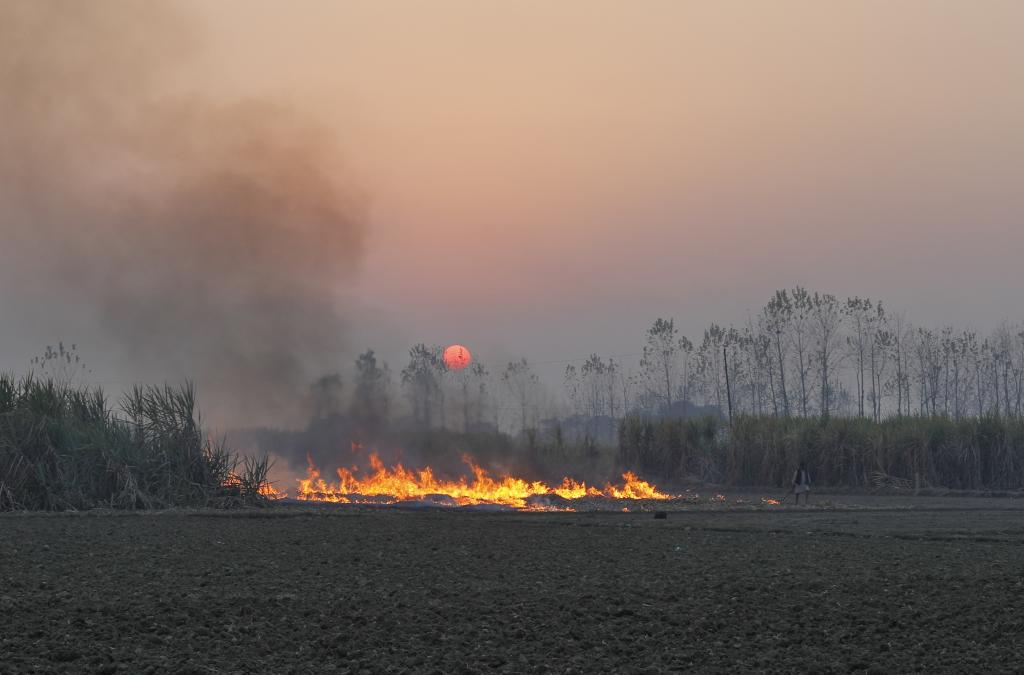Delhi air quality dips further,AQI in severe category
 NEW DELHI : Delhi’s Air Quality Index (AQI) on Saturday (October 24) deteriorated to the ‘severe’ category, which is likely to affect people’s health, according to Delhi Pollution Control Committee data (DPCC).
NEW DELHI : Delhi’s Air Quality Index (AQI) on Saturday (October 24) deteriorated to the ‘severe’ category, which is likely to affect people’s health, according to Delhi Pollution Control Committee data (DPCC).
The AQI in Alipur was at 432 while it stood at 427 and 409 in Mundka and Wazirpur, respectively. According to experts, the severe category affects the health of people and seriously impacts those with existing diseases.
An AQI of 0-50 is considered ‘good’, 51-100 ‘satisfactory’, 101-200 ‘moderate’, 201-300 ‘poor’, 301-400 ‘very poor’, 401-500 ‘severe’ and above that ‘severe-plus / emergency’. The deterioration in air quality could also be attributed to the increase in stubble-fire counts in Haryana and Punjab October 21, 2020.
The SAFAR (System of Air Quality and Weather Forecasting and Research) website, under the Union Ministry of Earth Sciences, presented a season-topping count of 1,428 fires. Burning stubbles accounted for about 9 per cent of the city’s particulate matter (PM) 2.5 concentration.
The concentration of toxins PM2.5 and PM10 was more than double the safe limits (50 and 100 microgramme per cubic metre) prescribed by the World Health Organisation respectively.
Of 36 areas in Delhi monitored by the Central Pollution Control Board, Delhi Pollution Control Committee (DPCC) and India Meteorological Department (IMD), at least 17 were in the ‘very poor’ category.
Ten of 35 monitoring stations across the national Capital recorded the air quality’s dip into the ‘severe’ category on Friday, as Delhi’s overall pollution level continued to slide further into the ‘very poor’ category.
Officials at the monitoring stations said this was the worst air quality reading recorded in the city in the last eight months. At 11am, Delhi’s hourly average air quality index (AQI) reading was 374, in the ‘very poor’ zone.
While the overall AQI reading declined further towards the ‘severe’ category, according to 10 of the 35 monitoring stations, pollution levels in certain areas had already crossed the 400-mark. Nine of these stations are located in pollution hotspots, where the government will deploy intensive pollution control measures.
On Friday, at least 10 of 35 monitoring stations across the national Capital recorded the air quality’s dip into the ‘severe’ category. The overall Delhi pollution level was recorded in ‘very poor’ category. Officials at the monitoring stations said this was the worst air quality reading recorded in the city in the last eight months.
Notably, the pollution levels in several areas of the national capital had on Friday crossed 400-mark. Amid the rise in pollution levels, people are having problems with breathing and some children have started facing throat problems due to contaminated air.
An AQI between 0-50 is marked good, 51-100 is satisfactory, 101-200 is moderate, 201-300 is poor, 301-400 is very poor and 401-500 is considered severe.
The Central Pollution Control Board (CPCB) recently submitted before the Delhi High Court that it has issued directions to implementing agencies including State Pollution Control Boards, construction agencies, municipal bodies, traffic police and transport departments of Delhi and NCR for strict action against air polluting activities.
The petitioners urged the court to direct appropriate departments to take immediate and appropriate steps to ban the burning of effigies and fire-crackers in Delhi during the festival of Dussehra in light of COVID 19 pandemic.
(With Agency Inputs).

